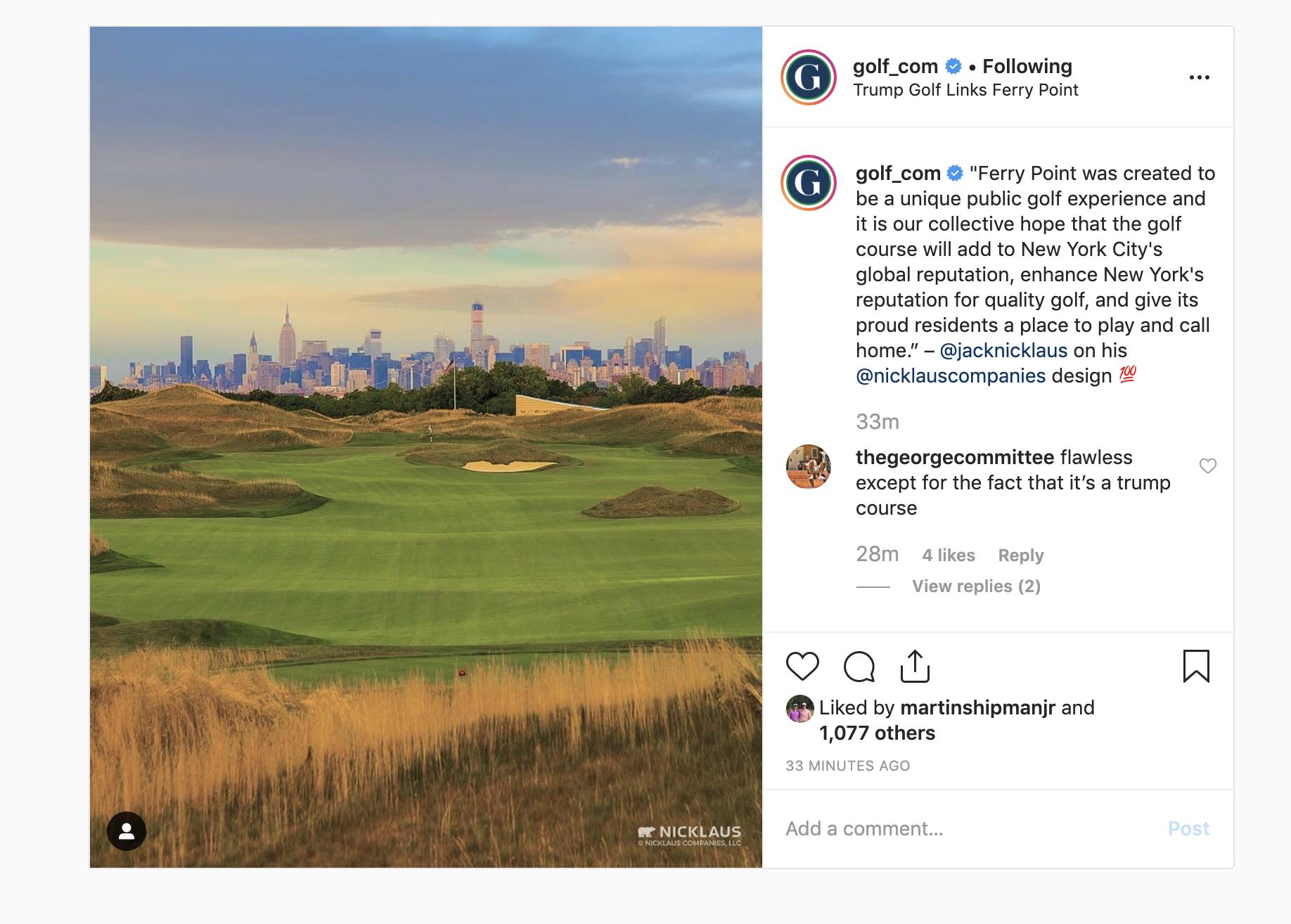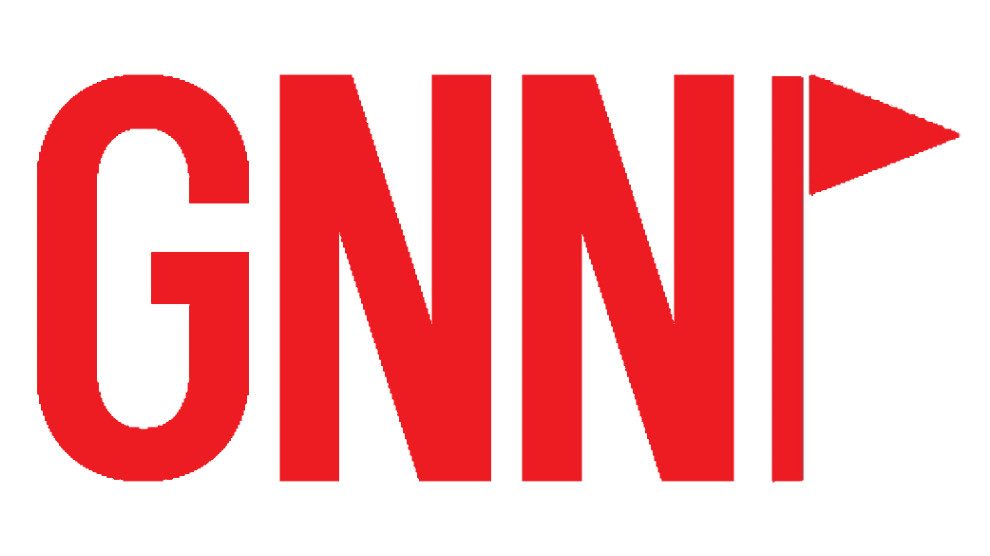On Monday morning, I got an email in my inbox from the folks at Nicklaus Design. They're working hard around the world building and renovating and restoring golf courses, and they wanted to take a minute to puff out their chest a bit.
In their newsletter, the Nicklaus Design folks proudly boast of how many of their firm's courses wound up in a new top-100 list of great resorts from Golf Magazine. What the email did not tell readers was the two companies, Nicklaus Design and Golf Magazine, are directly linked by a holding company, 8AM Golf, which operates the Nicklaus Companies and has owned Golf Magazine since February 2018 through company chairman Howard Milstein.
This isn't the first time Golf Magazine has failed to disclose their relationship with the Nicklaus Companies or the other companies in the 8AM Golf portfolio, including fitter True Spec Golf, Club Conex fitting parts, the app GolfLogix and the clubmaker Miura Golf as a distributor in North America and in various parts of the world.
In early 2019, Golf.com declared the Nicklaus Design remodel of Valley of the Eagles Golf Club in Ohio as its "best US remodel" of 2018. Initially, the publication didn't disclose the connection between the two companies. After blowback from Tron Carter of No Laying Up and subsequent criticism on Twitter, and almost certainly from the journalists inside the organization, Golf.com indicated the relationship at the bottom of the article.
Maybe would’ve been good to note that the owner of golf dot com also owns Nicklaus design? Seems like a missed editorial detail, but maybe I’m just old school. pic.twitter.com/8PzQu1vUnL
— Tron Carter (@TronCarterNLU) January 3, 2019
A recent Golf.com Instagram post featuring the Nicklaus Design-created Trump Links at Ferry Point did not initially disclose the relationship either. However, the caption was later updated.

Basic journalistic ethics -- and, I would argue, business ethics -- require and compel this kind of disclosure. The consumer deserves to know when two companies directly benefit from each other. The reader can then be aware of potential biases and blind spots in coverage, and they can choose to engage the content how they wish.
8AM Golf is a unique example, as a media company is covering an affiliated company under the same ownership umbrella. However, the 8AM Golf example can inform how similar conflicts can and should be addressed at every opportunity -- not by some watchdog but by the conflicted companies themselves. Transparency is an absolute must for trust in the media, which I don't need to tell you is not particularly high these days. And, unfortunately and somewhat unavoidably, golf is rife with conflicts of interest.
Golf may be a global game enjoyed by millions, but the number of people whose professional livelihood relies on the game is but a fraction of the number of golfers worldwide. From people working at golf facilities and retail stores, to public relations and media, to those affiliated with equipment makers, and everyone in between -- golf is a small world.
In one sense, that's what makes a golf profession part of a family-like community. Everyone knows someone who knows someone you know.
However, that small, banded community long ago created a culture of protectionism. The idea of "growing the game" has always somewhat been code for not saying anything critical of other golf-related companies, even when criticism is warranted. It's the notion that if one company suffers or is made to look less than above board, the rest of the golf world will be dragged down by association.
The protectionist culture is reinforced at times in the media world through relationships with golf companies.
If you make a golf product or work on behalf of a golf property or destination, or if you put on the finest golf tournaments in the world, golf media should be covering what you're doing. That's the media's job. However, the economics of golf media largely relies on advertising purchased by many of these same companies. An article about a company and an ad featuring the same company could very well run simultaneously, placed by two groups of people (journalists and business development) with somewhat competing priorities. The bottom line, however, is an advertiser clearly wouldn't like to see their creative marketing and advertising featured in a space where a media company -- that's at once both supposed to be financial partner and neutral observer -- rips them. With journalism and media jobs disappearing by the day in complete contrast to the decade-long American economic recovery, how can a media platform feel comfortable reporting something or expressing an opinion that could jeopardize a substantial ad deal or financial arrangement?
Financial entanglements create inherent conflicts of interest that must be better addressed.
Golf Channel owns a variety of businesses, including GolfNow, perhaps the most influential in convincing golfers where to play. You may well have figured that out by now, just the same that you might know Golf Channel owns Golfpass and Revolution Golf and Shop With Golf and GolfAdvisor. (They make clear links to these sites from GolfChannel.com.) But that link could be made clearer on TV, both during Golf Channel programming and in commercials.
Television hosts and social-media influencer types sometimes have deals with apparel makers to wear their gear and potentially talk positively about it. While it might seem obvious to some that wearing a brand head-to-toe and always raving about said brand is a clear tell of an endorsement deal, it's not explicit enough. Influencers are compelled by law to share their conflicts of interest, but they should be clearer. The same should be true for TV personalities. Both should display in plain text to a viewer who their sponsors are when they're on-screen -- any screen -- and platforms should better accommodate and encourage that level of transparency.
Then there are the conflicts of interest that are subtle, even if not overtly stated. Golf media and content creators can have access to destinations, equipment and trips they otherwise either couldn't afford or wouldn't purchase on their own.
In the golf travel world, resorts and properties will sponsor what are called media familiarization trips (fams, for short) in which journalists and content creators will have some or all of their travel and golf costs covered to experience a property. Sometimes, the accommodations are covered in full. Sometimes, influencers are compensated above and beyond travel costs to post positively about a destination or property. These junkets make sense for destinations looking to attract people who might not otherwise venture to their resort, getting a crop of people with unique, sizable audiences in one place at one time to showcase the best of their property.
These properties aren't going to open their doors to potential negative exposure, so of course the trip will be a good time for most people. However, if the creator in question produces content suggesting a facet of their experience undesirable, they could find it more difficult to take similar trips in the future. Someone may not be explicitly blackballed for what they share, but that person could be seen as a risk to the marketing budget.
Outside of fams, travel journalists and influencers can garner private invitations to stay at a property or play golf at a particular club. The round could be comped, as could a short hotel stay. Many times, the creators themselves engage these properties for a freebie in exchange for press and exposure. Those deals should be disclosed, too, as they can often create a groundswell of coverage that can elevate a property in the public consciousness. It's a winner for the property operators and the creators, but the golfer should know the provenance of the trips in question.
You've likely seen golf equipment reviews on blogs and through social media, particularly on YouTube. Often times -- though not universally -- the equipment is provided gratis to the reviewer. The reviewer should disclose that in some way. It can be simple -- using phrases like "I was sent," or "I was provided" -- or more detailed. So much golf equipment is tremendous, and a reviewer's opinion could be positive or downright glowing even if they had to pay for it, but the consumer should always know how the reviewer came to procure the equipment reviewed.
Annual lists of the best golf equipment are often perceived by the public as compromised because many of those same companies receiving the highest rankings just so happen to have the biggest marketing budgets among their peers. A more clear set of disclaimers in those ranking pieces could help assuage consumers' concerns.
For their part, representatives of these endemic companies (and potential advertisers) are typically fair and understand the conflicts at play. Many have been on record with me as being comfortable with legitimate criticism so long as it doesn't spill into maliciousness. Nothing and nowhere is perfect, so there's no point in pretending that anything or anywhere is. However, no matter the trust I have with any company, I always have a latent fear of that line. Does that mean I sometimes am too "gotta hear both sides" in my criticism? I don't know. I hope not, but I can't declare myself completely pure.
And that's why explicit disclosure matters. It's equally as much for me, you and the endemic companies we work with on a daily basis.
At Golf News Net, when we run a sponsored article, we label it Sponsored Content at the top.
When we run articles promoting sales on Amazon or other online retailers, we label the content Sponsored because we can profit from your purchases through affiliate relationships, and we have explained that in a separate policy disclosure.
A minority of sponsors have initially balked at that disclosure; many encourage it. Some are indifferent. But I feel strongly that content developed in conjunction with or on behalf of an advertiser as part of a financial relationship has to be disclosed, even if it is not explicitly promotional in nature. It does not have to be seen as a negative whatsoever.
Golf Channel and Golf Digest routinely label sponsored content in explicit fashion. Golfweek sponsored content lists the company providing the content in the byline.
I will work to be even clearer in the future of any potential recent potentially conflicting transactions or relationships with companies or destinations -- even if we're just reporting straight news about one of those parties. The Securities and Exchange Commission requires it of brokers talking about investments they own or hawk, and we should do the same as we can influence golfers to the tune of thousands of dollars.
Golf is far from the only sport or business where the media covering it has the potential to face substantial conflicts of interest. Some are inherent. Some are unavoidable. Many are by choice. And that's why it makes it all the more important the golf consumer knows where we all stand.

